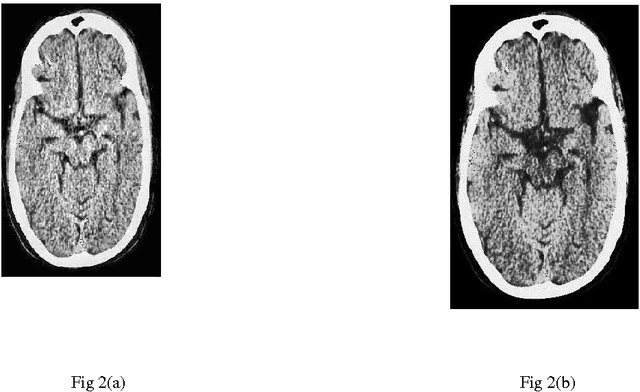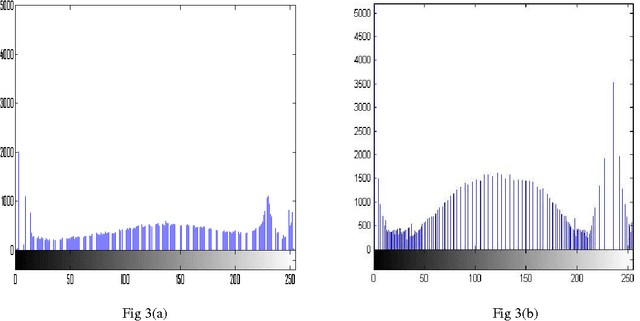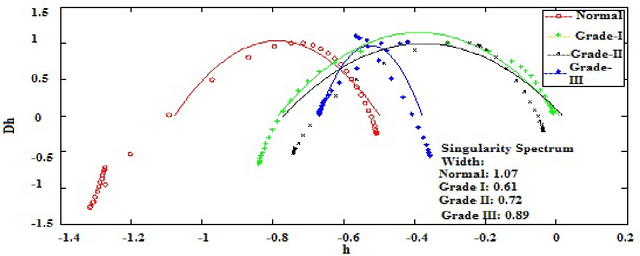Sawon Pratiher
StationPlot: A New Non-stationarity Quantification Tool for Detection of Epileptic Seizures
Nov 10, 2018



Abstract:A novel non-stationarity visualization tool known as StationPlot is developed for deciphering the chaotic behavior of a dynamical time series. A family of analytic measures enumerating geometrical aspects of the non-stationarity & degree of variability is formulated by convex hull geometry (CHG) on StationPlot. In the Euclidean space, both trend-stationary (TS) & difference-stationary (DS) perturbations are comprehended by the asymmetric structure of StationPlot's region of interest (ROI). The proposed method is experimentally validated using EEG signals, where it comprehend the relative temporal evolution of neural dynamics & its non-stationary morphology, thereby exemplifying its diagnostic competence for seizure activity (SA) detection. Experimental results & analysis-of-Variance (ANOVA) on the extracted CHG features demonstrates better classification performances as compared to the existing shallow feature based state-of-the-art & validates its efficacy as geometry-rich discriminative descriptors for signal processing applications.
Manifold Learning & Stacked Sparse Autoencoder for Robust Breast Cancer Classification from Histopathological Images
Jun 18, 2018



Abstract:Computer aided diagnosis (CAD) of histopathological images (HI) requires efficient structural representation of the underlying surface tissue convolutions as manifested by the diverse breast cancerous (BC) tissue morphology. In this contribution, HI are modelled as spatially-progressive lower dimensional dynamical patterns embedded in the higher dimensional HI space. Manifold learning on these HI point-cloud is envisaged by LandMark ISOMAP (L-ISOMAP) for isometric feature mapping. The dimensionality reduced L-ISOMAP descriptors are cascaded with stacked sparse autoencoder (SSAE) for learning deep textural feature and tumor malignancy detection thereof. Classification accuracy of 99.4% obtained on publicly available BreaKHis dataset outperforms the state-of-the-art methods and validates it's adequacy as an adjunct tool to clinicians in confirming their diagnosis. Further, employing L-Isomap based manifold embedding, the dimensionality of HI are reduced drastically without significant loss in its discriminating competency. These relieves the GPU requirement for SSAE aided deep learning. Experimental results are discussed in detail.
SolarisNet: A Deep Regression Network for Solar Radiation Prediction
Dec 10, 2017



Abstract:Effective utilization of photovoltaic (PV) plants requires weather variability robust global solar radiation (GSR) forecasting models. Random weather turbulence phenomena coupled with assumptions of clear sky model as suggested by Hottel pose significant challenges to parametric & non-parametric models in GSR conversion rate estimation. Also, a decent GSR estimate requires costly high-tech radiometer and expert dependent instrument handling and measurements, which are subjective. As such, a computer aided monitoring (CAM) system to evaluate PV plant operation feasibility by employing smart grid past data analytics and deep learning is developed. Our algorithm, SolarisNet is a 6-layer deep neural network trained on data collected at two weather stations located near Kalyani metrological site, West Bengal, India. The daily GSR prediction performance using SolarisNet outperforms the existing state of art and its efficacy in inferring past GSR data insights to comprehend daily and seasonal GSR variability along with its competence for short term forecasting is discussed.
Application of S-Transform on Hyper kurtosis based Modified Duo Histogram Equalized DIC images for Pre-cancer Detection
Apr 30, 2015Abstract:Our proposed hyper kurtosis based histogram equalized DIC images enhances the contrast by preserving the brightness. The evolution and development of precancerous activity among tissues are studied through S-transform (ST). The significant variations of amplitude spectra can be observed due to increased medium roughness from normal tissue were observed in time-frequency domain. The randomness and inhomogeneity of the tissue structures among human normal and different grades of DIC tissues is recognized by ST based timefrequency analysis. This study offers a simpler and better way to recognize the substantial changes among different stages of DIC tissues, which are reflected by spatial information containing within the inhomogeneity structures of different types of tissue.
A comparative study between proposed Hyper Kurtosis based Modified Duo-Histogram Equalization (HKMDHE) and Contrast Limited Adaptive Histogram Equalization (CLAHE) for Contrast Enhancement Purpose of Low Contrast Human Brain CT scan images
Apr 07, 2015


Abstract:In this paper, a comparative study between proposed hyper kurtosis based modified duo-histogram equalization (HKMDHE) algorithm and contrast limited adaptive histogram enhancement (CLAHE) has been presented for the implementation of contrast enhancement and brightness preservation of low contrast human brain CT scan images. In HKMDHE algorithm, contrast enhancement is done on the hyper-kurtosis based application. The results are very promising of proposed HKMDHE technique with improved PSNR values and lesser AMMBE values than CLAHE technique.
Wavelet based approach for tissue fractal parameter measurement: Pre cancer detection
Mar 21, 2015

Abstract:In this paper, we have carried out the detail studies of pre-cancer by wavelet coherency and multifractal based detrended fluctuation analysis (MFDFA) on differential interference contrast (DIC) images of stromal region among different grades of pre-cancer tissues. Discrete wavelet transform (DWT) through Daubechies basis has been performed for identifying fluctuations over polynomial trends for clear characterization and differentiation of tissues. Wavelet coherence plots are performed for identifying the level of correlation in time scale plane between normal and various grades of DIC samples. Applying MFDFA on refractive index variations of cervical tissues, we have observed that the values of Hurst exponent (correlation) decreases from healthy (normal) to pre-cancer tissues. The width of singularity spectrum has a sudden degradation at grade-I in comparison of healthy (normal) tissue but later on it increases as cancer progresses from grade-II to grade-III.
 Add to Chrome
Add to Chrome Add to Firefox
Add to Firefox Add to Edge
Add to Edge